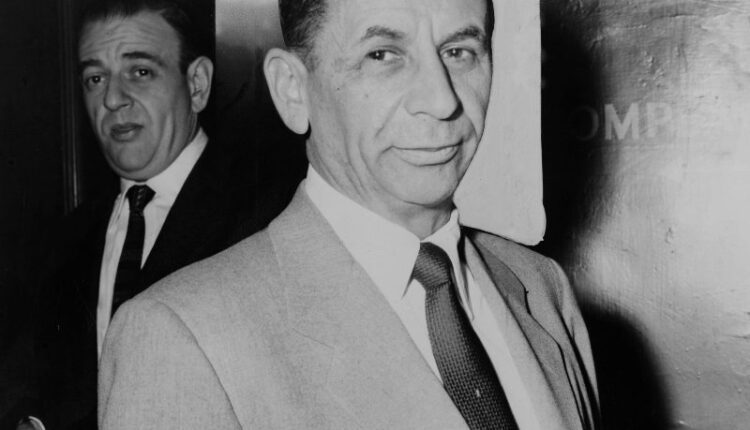
In Sept. 2020, the median home sale price in Nevada was $344,900. As of Sept. 2023, that figure had risen to $437,400, a nearly 27% increase, according to Redfin. In Las Vegas, the average cost of rent is $1,429 per month, up 30% from the beginning of the pandemic. (AP Photo/Andrew Harnik)
The Biden administration announced last week that it’s launching a multi-agency effort to ensure access to affordable housing, introducing a slew of resources to help convert high-vacancy commercial buildings to residential use.
The White House says these efforts are an attempt to create “much-needed housing that is affordable, energy efficient, near transit and good jobs, and reduce greenhouse gas emissions.”
Specifically, the administration is supporting the conversion of high-vacancy commercial buildings to residential use through new financing, technical assistance, and sale of federal properties. The goal is to create more affordable housing closer to transit in many communities across the country.
These efforts come as housing and rental prices have soared in recent years. Mortgage rates are nearing 8% and with steadily rising home prices and the lowest inventory of homes for sale in over a decade, the housing market is increasingly pricing out working and middle-class families.
In Sept. 2020, the median home sale price in Nevada was $344,900. As of Sept. 2023, that figure had risen to $437,400, a nearly 27% increase, according to Redfin. In Las Vegas, the average cost of rent is $1,429 per month, up 30% from the beginning of the pandemic. These figures are in line with a national trend that’s shown rising home and rent prices since the beginning of the pandemic.
As part of last week’s announcement, the US Department of Transportation (DOT) will release new guidance on more than $35 billion in lending available for efforts to boost housing supply near public transit and improve local zoning and land use laws.
The DOT will also release guidance that will make it easier for both local and municipal transit agencies across the country to transfer and repurpose existing structures and properties, “for transit-oriented development and affordable housing projects, including conversions near transit.”
The idea of converting empty commercial or public buildings into residential real estate is one that has gotten increasing attention in recent years, as America’s housing crisis has worsened.
Transportation Secretary Pete Buttigieg told reporters on a call last week that these newly-launched programs will build on existing conversion projects, “helping to advance those efforts to increase housing supplies and reduce housing costs.”
“The pandemic really changed the patterns of how many Americans work and live and commute, and right now, across the country, we’re seeing decades-high levels of office vacancies in many downtowns, while at the same time, many of America’s cities and towns face a steep shortage of housing, and families are struggling to afford housing and transportation,” he said.
The Department of Housing and Urban Development (HUD) will also have a hand in this latest effort from the Biden administration—it will release an updated notice detailing how its Community Development Block Grant fund can be used to boost housing supply. These grants support community development by addressing infrastructure needs, economic development projects, public facilities installation, housing rehabilitation, and more.
According to the White House, projects that qualify for these grants include those focused on the “acquisition, rehabilitation, and conversion of commercial properties to residential uses and mixed-use development.”
HUD will begin accepting applications for $85 million in funding through its Pathways to Removing Obstacles to Housing program, which makes money available to adapt buildings and finance conversions.
In its announcement, the Biden administration also released a Commercial to Residential Federal Resources Guidebook, detailing over 20 federal programs across six federal agencies with eligible resources for converting existing properties into living spaces.

Here’s a look at four parks lost over the past 120 years.
From bathhouses and petting zoos to Wild West replicas and log flume rides, Northern Nevada has had a long history of amusement parks geared for...

11 best movies set in Nevada
From its mountains to its deserts and Las Vegas, Nevada is the perfect backdrop for films. These 11 movies set in Nevada will make you proud to be...

Gone but not forgotten: 5 Las Vegas attractions that no longer exist
The following five Las Vegas attractions no longer exist, from an Old West town to an elaborate water park. The Las Vegas philosophy must be "easy...

Blast from the past: Nevada’s bizarre nuclear testing culture
Between 1951 and 1992, significant nuclear weapons tests lit up Nevada skies. The atomic mushroom clouds and bursts of light are still a pop culture...

Sin City’s criminal past: How the mob shaped Las Vegas
We go beyond what’s been told by Hollywood to unpack Las Vegas’ strong ties to the Mafia. Any fan of Martin Scorsese movies will likely tell you...

Black History Month explained: Its origins, celebrations and myths
By HAYA PANJWANI Associated Press WASHINGTON (AP) — Beginning Feb. 1, schools, museums and communities across the nation will mark the start of...




